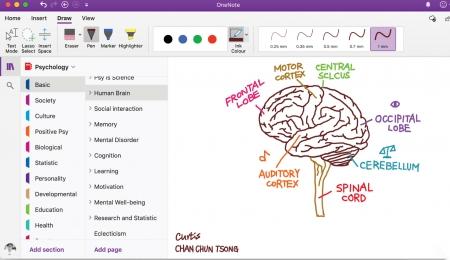
Sometimes nothing can beat the simplicity of paper and pen to jot down a quick note. However, when it comes to taking and keeping lengthy notes for academic purposes, online note-taking platforms are growing in popularity. These cloud-based apps are more than just online word processors; they collect different kinds of media, can be used with computers, tablets and phones, and are available to use and review material via any internet connection.
Online note taking means no more lost or forgotten notes, missing or torn notebook pages or illegible writing that must be deciphered after the fact. Instead, online note taking can help your students be more organized, give them the ability to annotate directly on source material or presentations and create and share notes with classmates.
Most note-taking apps have similar functionality so the software you choose to use will depend mostly on your comfort level and the equipment already available to your students. Yes, there are electronic pens or special tablets expressly designed for note taking, but my focus is on software that is commonly available and is free or comes preloaded onto your device.
Microsoft OneNote is an excellent note-taking platform that usually is part of the Windows software package that comes with a PC. OneNote is also a tablet app ($2.99), so you can seamlessly alternate between notes taken on a tablet and on a computer. If you take notes on a tablet with a stylus, OneNote converts your handwritten notes to text. You can import images and audio clips and create different notebooks, which helps with organization.
If your school uses Google Suite or has Chromebooks, Google has a few different methods for online note taking. Google Docs is a powerful choice given its accurate speech-to-text converter and the Explore option (under the Tools menu) that allows you to browse the internet on a side tab so note taking can happen on the same screen. Google Docs also allows you to download all your documents so you can read them offline when the internet is not available. Google Docs is best for longer text while Google Keep, Google’s note-taking app, is more appropriate for shorter bits of text. Google Keep has an easy-to-read format that looks much like a Post-it display. Google Keep integrates into Google Docs so you can use them in conjunction with each other.
Evernote was one of the pioneers of note-taking software, and it has kept up with technology’s changes and growth over the years. Evernote is multi-platform: Mac to PC, desktop to mobile. Like other note-taking apps, Evernote allows you to save notes to the cloud and incorporate different types of files and media. It accepts handwriting and allows you to search digital images of handwritten notes so they can be easily found and retrieved without converting to text. Evernote’s basic level is free to use.
Note-taking skills, despite the rise in technology use, are not outdated. With the proliferation of information and the expansion of online courses, it’s perhaps even more important for students to learn how to take effective notes. These apps can help.
Sandy Scragg is an instructional technology specialist with more than 15 years of experience in New York City public schools.